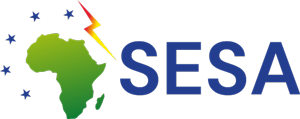D5.2 Barriers and policy gaps to accelerating the green transition and energy access in Africa
D5.2 Barriers and policy gaps to accelerating the green transition and energy access in Africa
Authors:
Painuly, J. P., Romero, J. R., Xia-Bauer, C.,Kehbila,A., &Mungo, C.
The barrier analysis covered in this report falls within Work Package 5, Task 5.2 – Policy development, institutionalisation and integration in local and national plans. Technologies for implementation have been identified by partners in demonstration and validation countries. The technology matrix for demonstration and validation sites can be referred to in Table 1.1 (Chapter 1).
This report covers barriers and policy gaps identified through a literature survey and stakeholder consultations for nine technologies in demonstration and validation countries (referred to as case studies); Productive Use of Solar Energy (PUE), and Electric Mobility (E-mobility) in Kenya, Clean Cooking in Malawi, Second-Life Use of EV Batteries in South Africa, PVs for Household use, and E-mobility in Morocco, Second-life Battery Use as Energy Storage for Solar Photo-voltaic Systems, and Bio-ethanol Technology for Cooking in Ghana, and Solar Irrigation in Rwanda.
Task 5.2 has linkages with other work packages of the project, as well as with other tasks within the same work package (WP 5). Though there are overlaps, inputs from packages WP1 to WP4 on the barriers and needs for policies in their domains (where they dive deep), can strengthen the findings in this area. Policies identified in this work package provide inputs for policy dialogue (WP6).



Recent Comments